Yi mein noodles (also called e-fu noodles or longevity noodles) are tossed with garlic, mushrooms, and green onions for a super satisfying dish. The noodles are seasoned with soy sauce, oyster, sesame oil, and white pepper. Onolicious as a side dish, or a simple main dish!
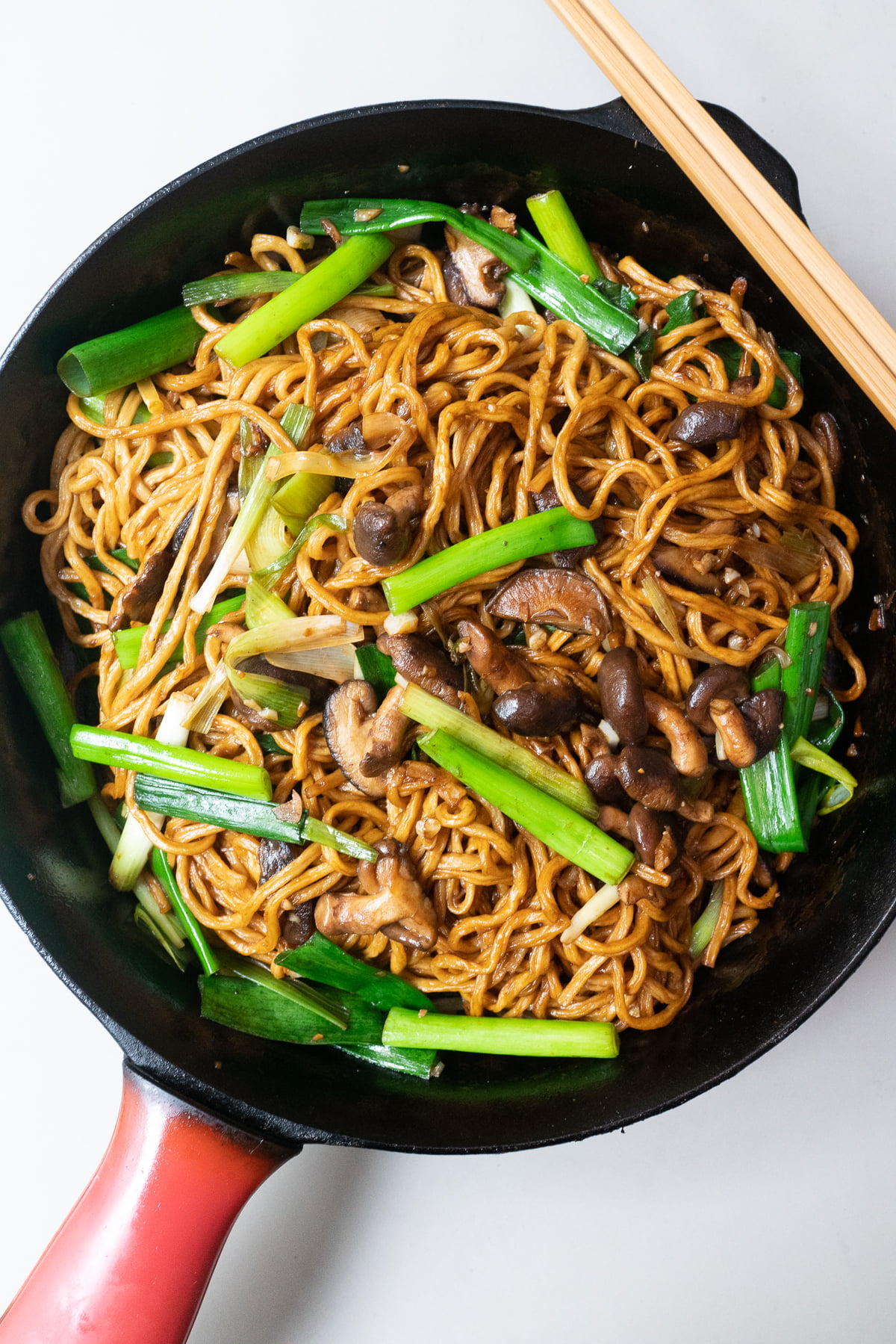
Growing up in Hawaii, we often attended celebrations and banquets at the many Chinese restaurants around town. Weddings! Birthdays! Chinese New Year parties! They were held at places like Legend Seafood and Jade Dynasty (both of which are also great for dim sum).
These celebrations always ended with the same dish: yi mein! Also referred to as e-fu noodles or longevity noodles, this was the last savory course and one of my favorite dishes.
Most people would be too full from earlier dinner courses (imagine a dozen courses of soup, chicken, sautéd vegetables, roast duck, steamed whole fish, crab etc) and the yi mein would be left at the table, this big pile of wonderful noodles. But I always made sure to save room. I was crazy about yi mein from the start.
If you've had yi mein before, you'll know what I'm talking about. The texture of these noodles are sooo goood. It's bouncy, chewy, and slightly spongy (in the best possible way). The noodles soak up sauce just right. You don't want to mess around with yi mein by adding too many ingredients. Keep it simple, keep it about the noodle.
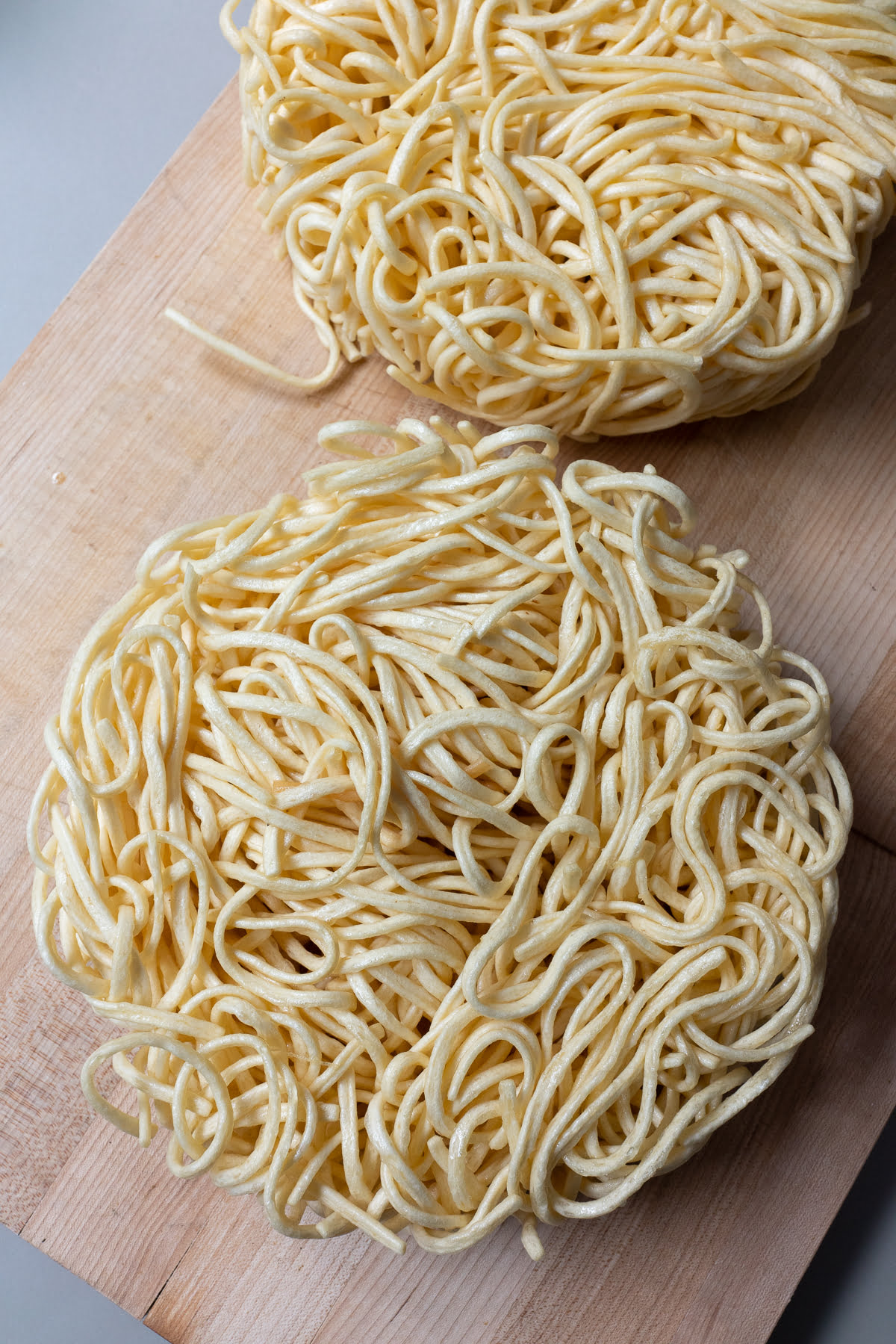
What Is Yi Mein?
Yi Mein goes by several names including:
- Yi Mein
- Yee Mein
- E-Fu Noodles
- Longevity Noodles
- Long Life Noodles
If you see any of those names, they're all referring to the same type of noodle!
You can find them at most Chinese markets alongside other dried noodles. They're big and puffy and sold as circular rounds. Yi mein is sold already deep fried (which is probably why they are SO delicious).
To cook with yi mein, boil the noodles and then toss with the other ingredients and sauce. Boiling also helps remove excess oil.
Yi mein has a very distinct texture and flavor. They have a nice chew while being slightly spongy. They're soft, but in a really, really good way. Plus they pair well with almost any protein! Mushrooms are classic, but you can also use chicken or even lobster.
Why This Recipe Works
This is an easy recipe. Boil the noodles, and then toss them in a pan with sautéed mushrooms, green onions, and garlic.
Pour the sauce (a mix of soy sauce, oyster sauce, and sesame oil) over the noodles. Toss, toss, toss. Eat and enjoy!
The only place where you can go wrong is if you boil the noodles too long, so just don't do that. Boil for 3 minutes max. And then drain.
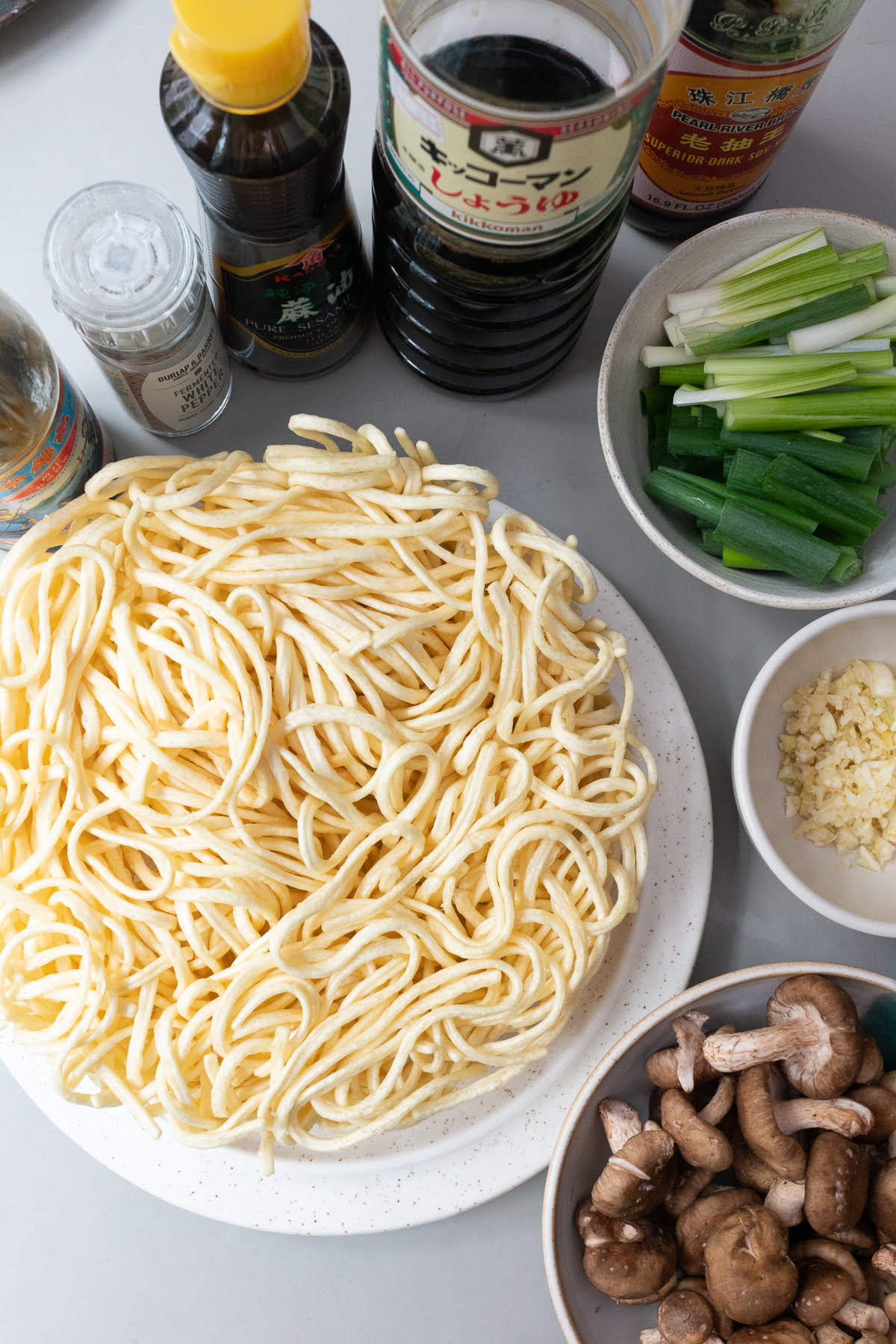
Ingredients
For the Noodles:
- Yi Mein Noodles - Just one bundle/disk is needed for this recipe.
- Fresh Shiitake Mushrooms - You can also use dried shiitake mushrooms. Or any other kind of mushroom you prefer.
- Green Onions - Cut into 2-inch pieces, separate the white and greens parts. This is because we cook the white parts first and then add the green parts at the end.
For the Sauce (which we will toss with the noodles):
- Garlic - Minced
- Soy Sauce - If you have dark soy sauce available, use half regular soy sauce and half dark soy sauce. If not, just use all regular soy sauce.
- Oyster Sauce - Lee Kum Kee is reliable. Make sure to get oyster sauce, and not oyster-flavored sauce.
- Sesame Oil - We use Kadoya brand sesame oil which can be found at nearly all Asian markets.
- White Pepper - Feel free to use more white pepper if you'd like. I love white pepper.
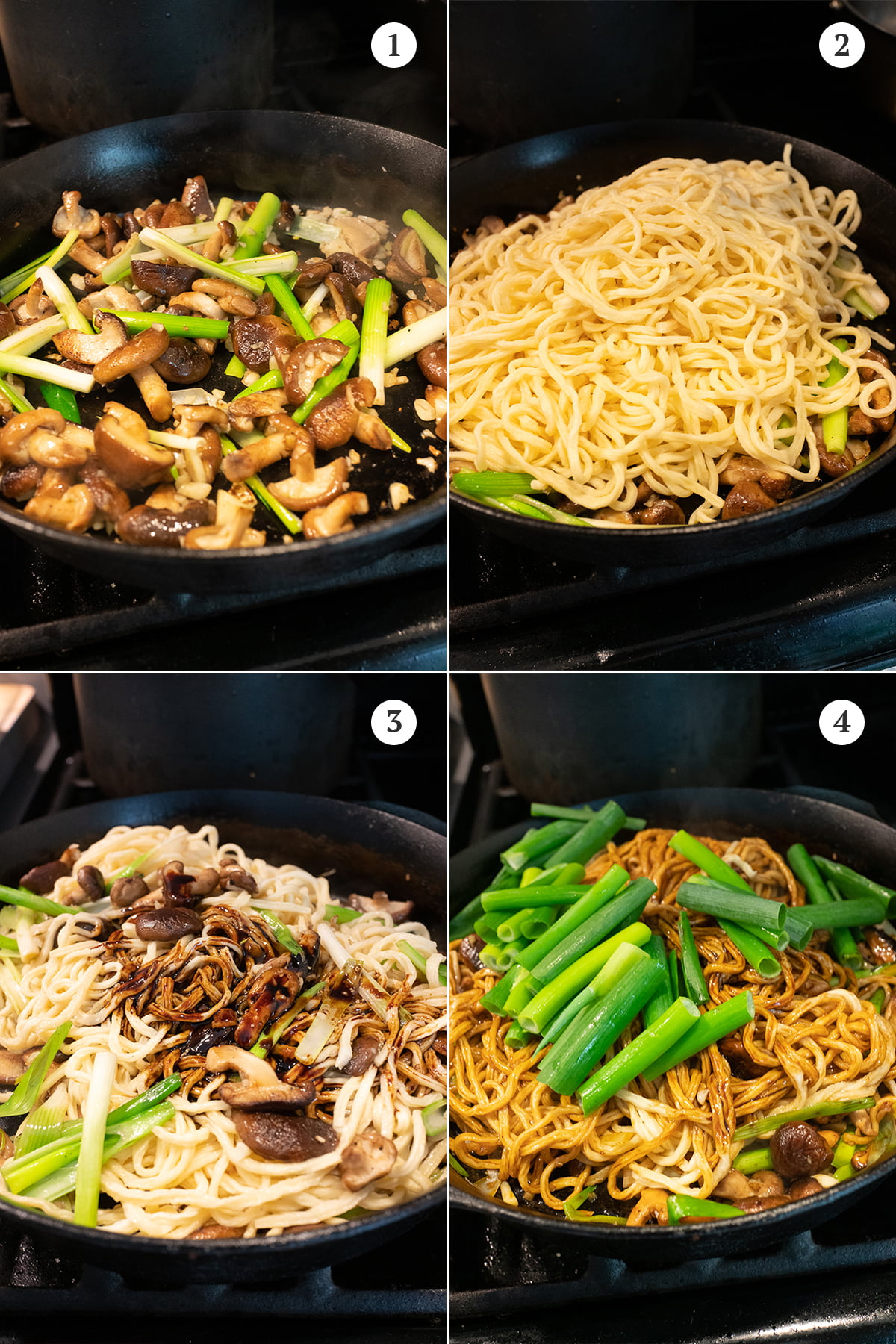
Step by Step Directions
Ready to start cooking? ^_^
Mix the sauce.
In a small bowl mix together the sauce ingredients: soy sauce, oyster sauce, sesame oil, and white pepper. Set aside.
Boil the noodles.
Bring a large pot of water to a boil. (Make sure your pot is big enough to hold that big disk of noodles.)
Boil the noodles for 3 minutes. Drain and set aside.
Tip: Do not boil the noodles for more than 3 minutes. Otherwise you'll end up with limp and soggy yi mein.
Sauté mushrooms, green onions, and garlic.
In a large pan, add a little oil and sauté the mushrooms for a few minutes.
Add the garlic and the white part of the green onions. Sauté until the garlic is golden.
Add noodles.
Add the drained noodles into the pan. Cook for another minute until everything is combined.
Add sauce.
Pour the sauce mixture evenly over the noodles. Give it a good mix and stir (try not to break the noodles).
Tip: Add more oil if the noodles are sticking to the pan. Add a little water if the noodles are drying out.
Finish and serve.
Add the green parts of the green onions. Cook for another minute.
Slide the finished noodles onto a plate. Ready to eat!
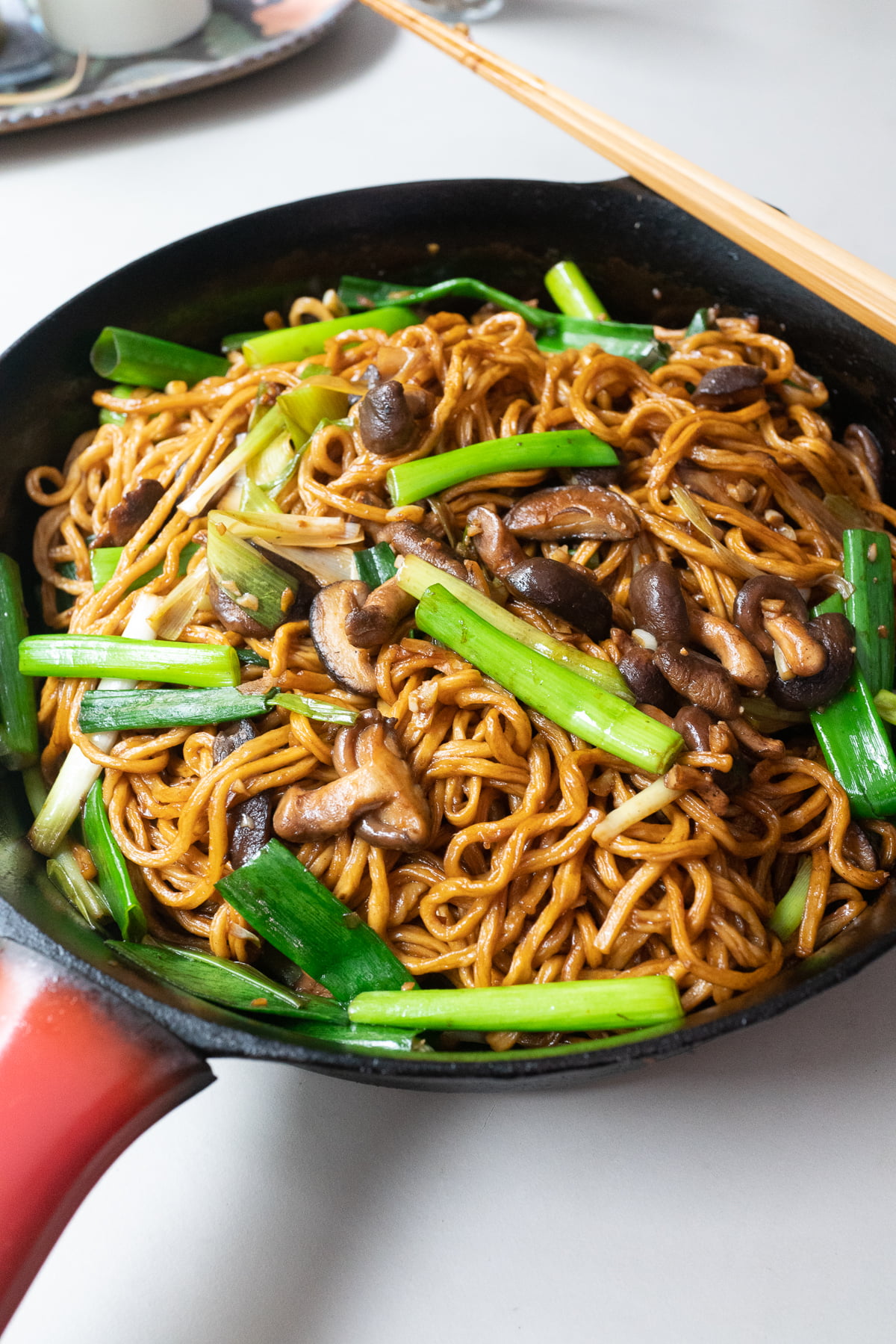
FAQs and Tips
They're best enjoyed as soon as you finish making them! Otherwise they might get a little soggy if they sit around (still delicious, but not as delicious as hot from the pan). Leftovers will keep in the refrigerator for 3-4 days.
Microwave for 1-2 minutes. Or steam for 3-4 minutes.
Endless options here! A few to get started:
- Steamed Ginger Chicken - A nice and clean meaty side. I like to drizzle the juices from this dish over the noodles heheh. So good.
- Fish Balls - Serve each person a small bowl of broth (like chicken broth) with a few fish balls. Alternate eating the noodles and drinking the soup. Clear soup and noodles always make a great combination.
- Pocket Eggs - Crispy eggs add texture and protein to this dish. Panfry several savory pocket eggs and serve them on a big plate. Let everyone select an egg to top their noodles (or eat on the side).
- Garlic and Fish Sauce Ong Choy - Because we always need vegetables and these are delicious.
- Simple Japanese Pickled Cucumbers - Yi mein is not a light dish, so these pickled cucumbers give a nice balance and brightness.
- Gau Gee - Carbs on carbs. It's Hawaii and we love Gau Gee!
Yes! A few ideas:
- Replace white pepper with black pepper. Or omit the pepper completely.
- You don't have to use only shiitake mushrooms. You can use any other type of mushroom. Or even use a mix of mushrooms. One time I made a five mushroom yi mein! It was super fun and I'd do it again in a heartbeat.
- Replace the green onions with garlic chives (which are sometimes referred to as Chinese chives). It's actually more common to use garlic chives instead of green onions for yi mein, but we always have an abundance of green onions at home so that is what we use.
Not that you need another reason to enjoy yi mein, but they are known as lucky and long life noodles. This is why yi mein is extra popular for birthdays and celebration banquets ^_^
Yi Mein (Longevity Noodles) Recipe
See below and enjoy!
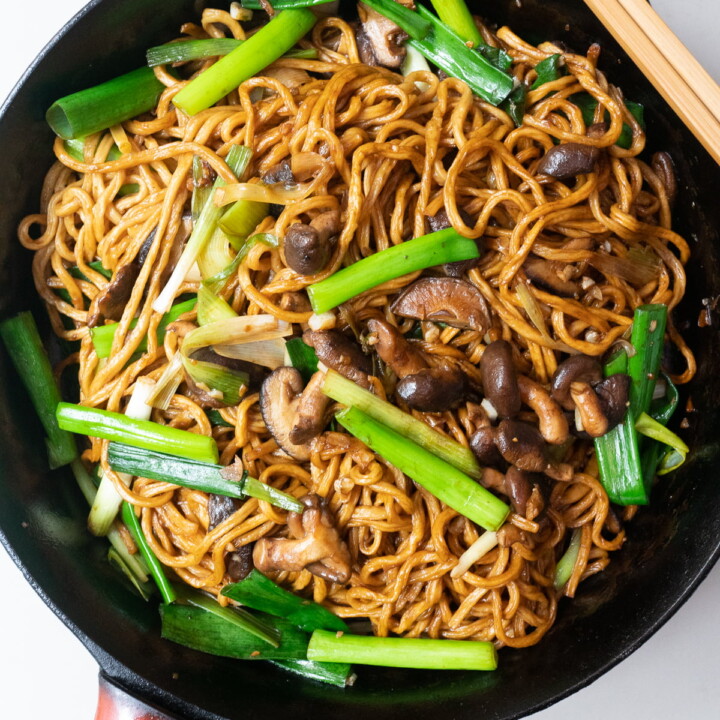
Yi Mein (Longevity Noodles)
Yi mein noodles tossed with garlic, mushrooms (feel free to use use any kind of mushrooms), and green onions for a super satisfying noodle dish. The noodles are seasoned with soy sauce, oyster, sesame oil, and white pepper. Onolicious as a side dish, or a simple main dish!
Ingredients
- 12 ounces yi mein noodles (also called e-fu or longevity noodles)
- ½ pound fresh shiitake mushrooms (or 8-10 pieces dried shiitake mushrooms, rehydrated), thinly sliced
- 1 bunch green onions, cut into 2-inch pieces, white and greens parts separated
- 5 cloves garlic, minced
Sauce
Instructions
- In a small bowl mix together the sauce ingredients: soy sauce, oyster sauce, sesame oil, and white pepper. Set aside.
- Bring a large pot of water to a boil. Boil the noodles for 3 minutes. Drain and set aside.
- In a large pan, saute the mushrooms for a few minutes. Add the garlic and the white part of the green onions. Saute until the garlic is golden.
- Add the drained noodles into the pan. Cook for another minute until everything is combined.
- Pour the sauce mixture evenly over the noodles. Give it a good mix and stir (try not to break the noodles).
- Add the green parts of the green onions. Cook for another minute.
- Slide the finished noodles onto a plate. Ready to eat!

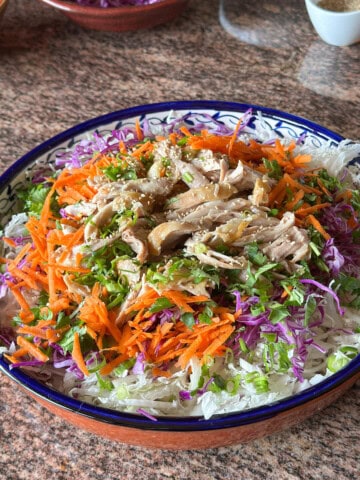

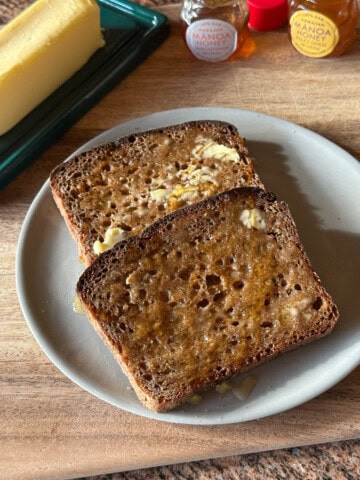
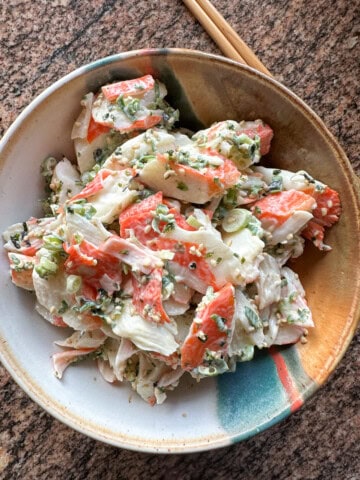
This was perfect. I made this for dinner and used Golden World Food Co.'s brand of E-Fu noodles and they package the 12oz. of noodles in two disks. So I used both disks and otherwise followed the recipe exactly.
It was a fun adventure looking for these noodles at the market - biggest ramen disks ever. 🙂
Aloha Chris! Ahaha yes, dried e-fu noodles really do look like the biggest ramen disks. Glad you liked the recipe!
- Kathy